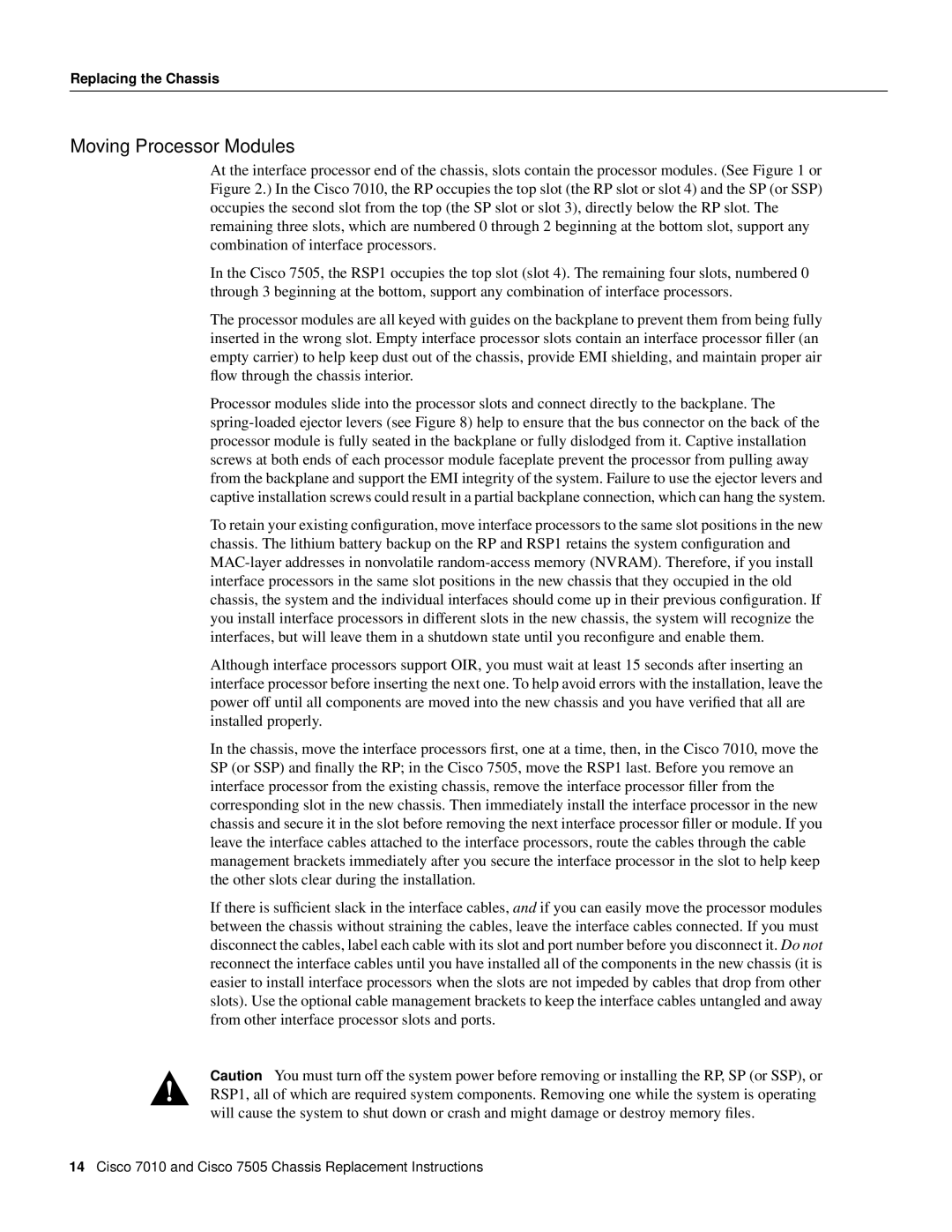
Replacing the Chassis
Moving Processor Modules
At the interface processor end of the chassis, slots contain the processor modules. (See Figure 1 or Figure 2.) In the Cisco 7010, the RP occupies the top slot (the RP slot or slot 4) and the SP (or SSP) occupies the second slot from the top (the SP slot or slot 3), directly below the RP slot. The remaining three slots, which are numbered 0 through 2 beginning at the bottom slot, support any combination of interface processors.
In the Cisco 7505, the RSP1 occupies the top slot (slot 4). The remaining four slots, numbered 0 through 3 beginning at the bottom, support any combination of interface processors.
The processor modules are all keyed with guides on the backplane to prevent them from being fully inserted in the wrong slot. Empty interface processor slots contain an interface processor filler (an empty carrier) to help keep dust out of the chassis, provide EMI shielding, and maintain proper air flow through the chassis interior.
Processor modules slide into the processor slots and connect directly to the backplane. The
To retain your existing configuration, move interface processors to the same slot positions in the new chassis. The lithium battery backup on the RP and RSP1 retains the system configuration and
Although interface processors support OIR, you must wait at least 15 seconds after inserting an interface processor before inserting the next one. To help avoid errors with the installation, leave the power off until all components are moved into the new chassis and you have verified that all are installed properly.
In the chassis, move the interface processors first, one at a time, then, in the Cisco 7010, move the SP (or SSP) and finally the RP; in the Cisco 7505, move the RSP1 last. Before you remove an interface processor from the existing chassis, remove the interface processor filler from the corresponding slot in the new chassis. Then immediately install the interface processor in the new chassis and secure it in the slot before removing the next interface processor filler or module. If you leave the interface cables attached to the interface processors, route the cables through the cable management brackets immediately after you secure the interface processor in the slot to help keep the other slots clear during the installation.
If there is sufficient slack in the interface cables, and if you can easily move the processor modules between the chassis without straining the cables, leave the interface cables connected. If you must disconnect the cables, label each cable with its slot and port number before you disconnect it. Do not reconnect the interface cables until you have installed all of the components in the new chassis (it is easier to install interface processors when the slots are not impeded by cables that drop from other slots). Use the optional cable management brackets to keep the interface cables untangled and away from other interface processor slots and ports.
Caution You must turn off the system power before removing or installing the RP, SP (or SSP), or RSP1, all of which are required system components. Removing one while the system is operating will cause the system to shut down or crash and might damage or destroy memory files.
14Cisco 7010 and Cisco 7505 Chassis Replacement Instructions
